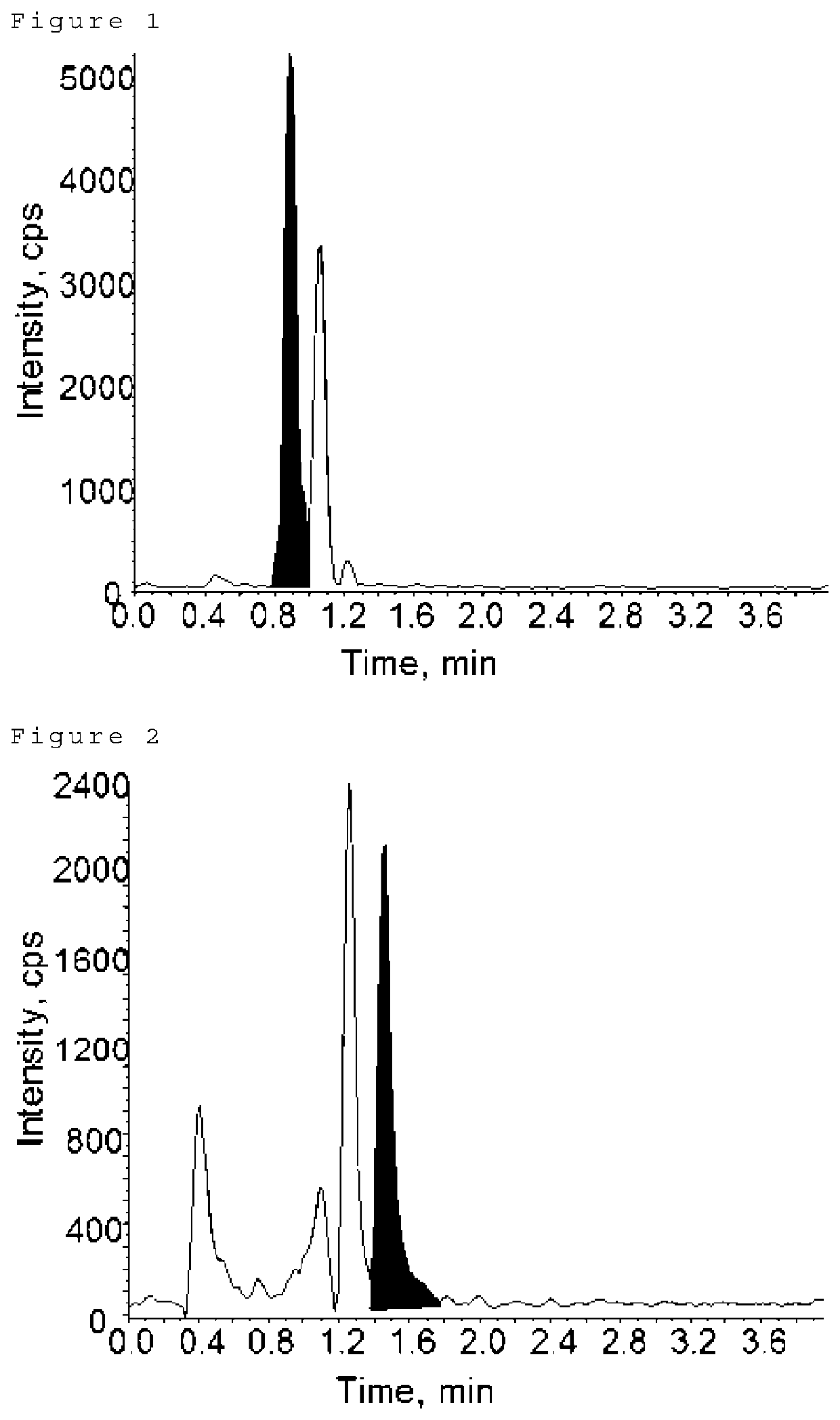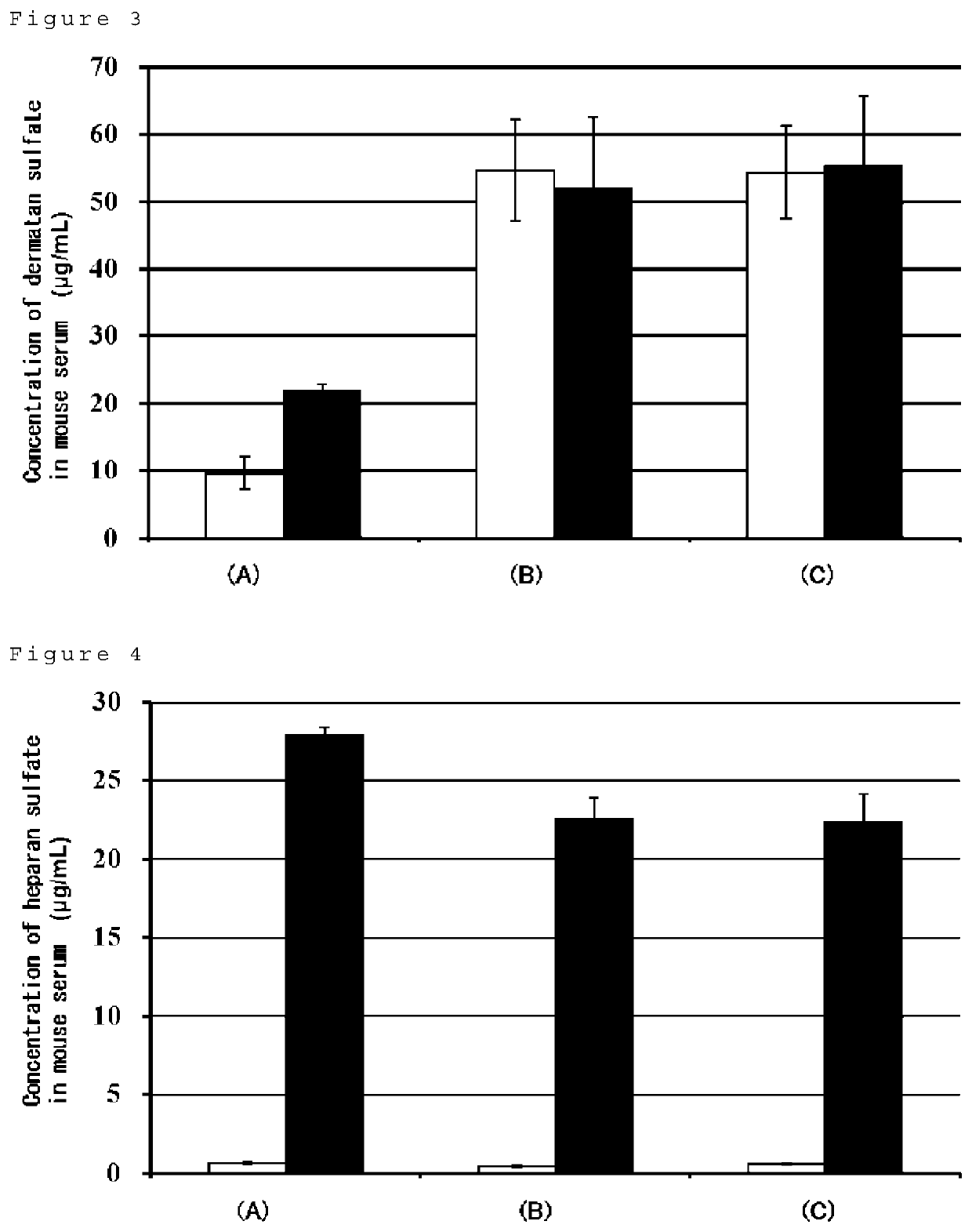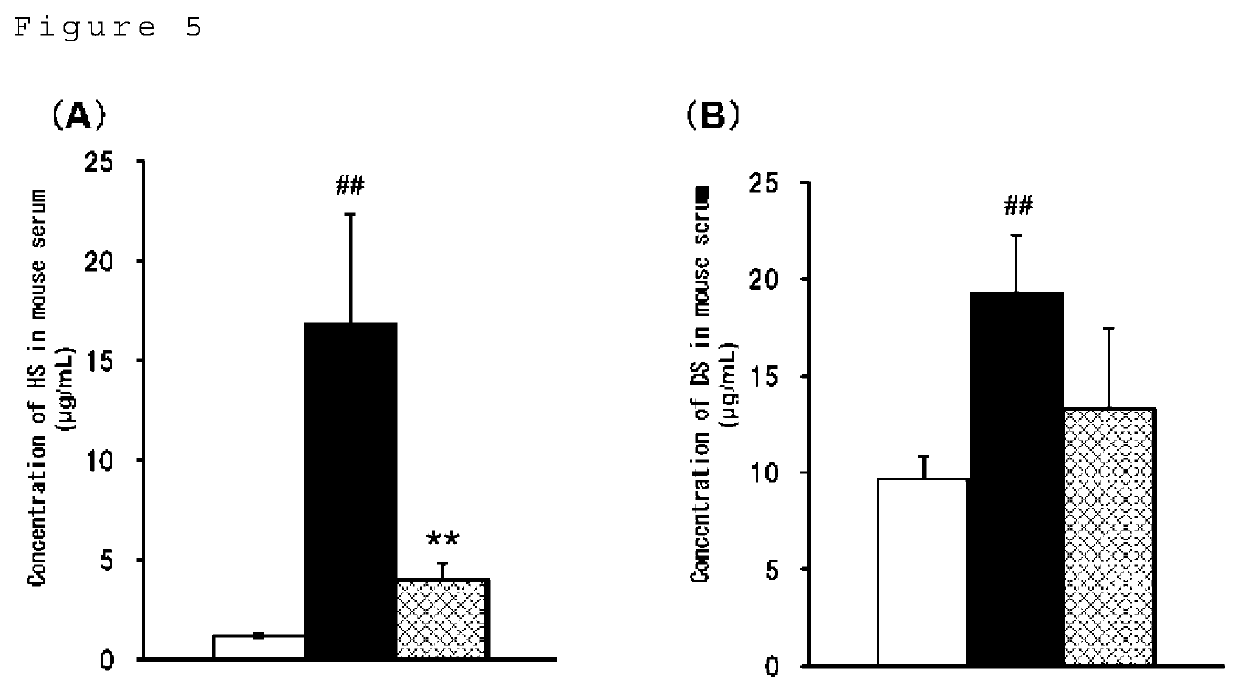Analytical method for glycosaminoglycans
a glycosaminoglycan and glycosaminoglycan technology, applied in the field of glycosaminoglycan analytical method, can solve the problems of abnormal gag accumulation in the tissues of patients, severe physical deformity and mental retardation, skeletal deformity and severe mental retardation, etc., and achieve the effect of sensitive measuremen
- Summary
- Abstract
- Description
- Claims
- Application Information
AI Technical Summary
Benefits of technology
Problems solved by technology
Method used
Image
Examples
example 1
Preparation of Each Solution
[0094]Solutions of (a) to (1) used in the test were prepared by the following procedure.
(a) MeCN / Water:
[0095]0.5 mL of water for injection and 4.5 mL of acetonitrile were mixed to make a MeCN / water. This solution was prepared before use.
(b) Deuterium Labeled Solvent:
[0096]In an ice bath, 240 μL of acetyl chloride was added dropwise to 1.5 mL of methanol-d4 (Sigma-Aldrich Inc.) as a deuterium-labeled solvent. This solution was prepared before use.
(c) PBS / Citric Acid Solution:
[0097]Citric acid was dissolved in pure water to prepare a citric acid solution at a concentration of 10 mM. Furthermore, trisodium citrate dihydrate was dissolved in pure water to prepare a sodium citrate solution having a concentration of 10 mM. Sodium citrate solution was added dropwise to the citric acid solution to adjust to pH 3.0. The solution was 10 mM citrate buffer, pH 3.0. A solution obtained by adding 2 mL of PBS to 18 mL of 10 mM citrate buffer (pH 3.0) was used as a PBS / c...
example 2
Preparation of Blood Samples
[0107]Blood was collected from wild-type mice (C57BL / 6N) and hemizygous mice lacking chromosomal regions containing IDS genes (IDS hemizygous mice, C57BL / 6N). The collected blood was transferred to a tube and left to stand at room temperature for 30 minutes or longer, and then centrifuged (2000 g, 20 minutes) to collect serum. To 8 μL of sera, 8 μL of PBS and 144 μL of 10 mM citrate buffer (pH 3.0) were added and stirred. This was measured out in 20 μL and separated into borosilicate screw-top test tubes. This was used as a blood sample solution.
example 3
Methanolysis Reaction
[0108]Each of the calibration curve preparation solutions prepared in Example 1 above was measured out in 20 μL and individually separated into borosilicate screw-top test tubes. Also, as blanks, PBS / citric acid solutions were separated into borosilicate screw-top test tubes. The solvent in the tube was distilled off under a stream of nitrogen (N=1). To the dried product was added 20 μL of 2,2-dimethoxypropane and 200 μL of hydrogen chloride methanol solution having 3N concentrations of hydrochloric acid, followed by agitation, followed by methanolysis reactions under three conditions (Conditions A to C) shown in Table 1. After the reaction, the solvent was distilled off under a stream of nitrogen. After 50 μL of the sample dissolving solution was added to the dried matter and dissolved, the solution was centrifuged (15000 rpm, room temperature for 10 minutes) and the supernatant was collected in a vial.
[0109]In addition, the dermatan sulfate standard stock solu...
PUM
| Property | Measurement | Unit |
|---|---|---|
| temperature | aaaaa | aaaaa |
| temperature | aaaaa | aaaaa |
| temperature | aaaaa | aaaaa |
Abstract
Description
Claims
Application Information
 Login to View More
Login to View More - R&D
- Intellectual Property
- Life Sciences
- Materials
- Tech Scout
- Unparalleled Data Quality
- Higher Quality Content
- 60% Fewer Hallucinations
Browse by: Latest US Patents, China's latest patents, Technical Efficacy Thesaurus, Application Domain, Technology Topic, Popular Technical Reports.
© 2025 PatSnap. All rights reserved.Legal|Privacy policy|Modern Slavery Act Transparency Statement|Sitemap|About US| Contact US: help@patsnap.com



